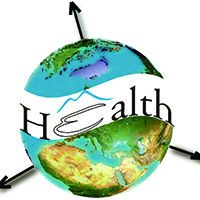Spatial access to public hospitals during COVID-19 in Nottinghamshire, UK

Accepted: 23 October 2022
HTML: 53
All claims expressed in this article are solely those of the authors and do not necessarily represent those of their affiliated organizations, or those of the publisher, the editors and the reviewers. Any product that may be evaluated in this article or claim that may be made by its manufacturer is not guaranteed or endorsed by the publisher.
Authors
We intend to tackle two under-addressed issues in access to healthcare services during the COVID-19 pandemic: first, the spatiotemporal dynamic of access during the pandemic of acute communicable disease; second, the demographic and socioeconomic access disparities. We used the two-step floating catchment area (2SFCA) method to measure the spatial access to public hospitals during the second COVID-19 wave (September 28th-February 28th, 2021) in Nottinghamshire, UK. To investigate the temporal variation in access along with the development of the pandemic, we divided our study period into 11 sections and applied the 2SFCA to each of them. The results indicate that western Nottinghamshire is better than the eastern part from a spatial perspective and the north-western urban area represents the highest spatial access; temporally, the accessibility of the public hospitals generally decreased when the number of cases increased. Particular low accessibility was observed at the beginning of the pandemic when the outbreak hit the university region and its vicinities during the back-to-school season. Our disparity analysis found that i) the access of the senior population to public hospitals deviated from that of the general population, ii) the access was positively associated with socioeconomic status, and iii) all disparities were related to the urban-rural discrepancy. These findings can help to plan temporary clinics or hospitals during epidemic emergencies. More generally, they provide scientific support to pandemic-related healthcare resource allocation and policy- making, particularly for people in vulnerable areas.
How to Cite

This work is licensed under a Creative Commons Attribution-NonCommercial 4.0 International License.
PAGEPress has chosen to apply the Creative Commons Attribution NonCommercial 4.0 International License (CC BY-NC 4.0) to all manuscripts to be published.

 https://doi.org/10.4081/gh.2022.1123
https://doi.org/10.4081/gh.2022.1123




